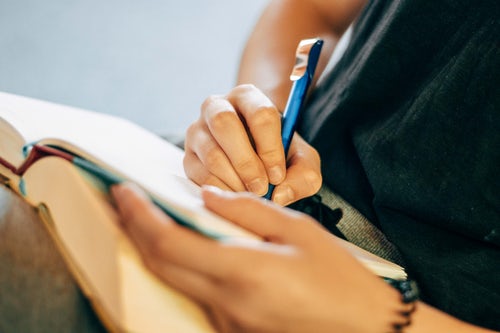
Proofreading: What It Is And How To Do It
Proofreading might sound easy. We all know it’s important. And yet – all too often – proofreading isn’t done effectively, or isn’t done at all. Read on to discover exactly what proofreading is and how to do it.
Teachers and tutors often remind students of the importance of proofreading work, whether it’s an assignment, piece of coursework, or exam answer. ‘Save five minutes at the end to proofread’, they’ll say. Or, more simply, ‘Don’t forget to check it through’. It might sound easy. We all know it’s important. And yet – all too often – proofreading isn’t done effectively, or isn’t done at all. Read on to discover exactly what proofreading is and how to do it.
Proofreading is the final check of every detail of a piece of work, before that piece of work can be considered complete. It involves identifying and correcting errors in spelling, punctuation, sentence construction, paragraphing, capitalisation, and layout. The phrase ‘check it through’ is slightly misleading, because it can make proofreading seem quicker and simpler than it actually is.
Why isn’t proofreading easy? Mainly, because it’s hard to be objective about your own writing, and it’s hard to slow down the pace of reading in order to catch every error. It’s all too easy for your eye to see what it wants to see, instead of what’s actually there.
Top tips for proofreading success
If you can, take a break between writing your work and proofreading it, to refresh your thinking. You might even move to a different place to proofread. If neither of these is possible because you’re in the middle of an exam, take a deep breath and mentally refocus.
As you begin to proofread, make sure there are no distractions.
That means no phone, no background music, no interruptions from other people… Your work deserves your full attention. After all, you’ve gone to all the trouble of writing it. Don’t jeopardise your chances of success by skimping on this crucial final stage.
If possible, print out your work in order to proofread it.
It’s often much easier to spot errors when they’re on the printed page, not on a screen.
Slow down.
Usually, when we read, our eyes move in ‘jumps’ across the page, focusing on just a few points in each line of text. This means that most words appear only in our peripheral vision. To proofread successfully, you need to train your eyes to look at every single word and punctuation mark in turn. You might find it helpful to move a ruler down the page line by line as you read.
You know your own writing best.
What errors do you often make? Could it be mixing up ‘there’, ‘they’re’, and ‘there’, forgetting apostrophes, or misspelling words with double letters in? Create a checklist, then proofread your work, looking for each error in turn.
Alternatively, you could try proofreading in stages. For example, you could start by searching for spelling errors, then punctuation errors, then errors with capital letters, and so on.
Read your work aloud; this can help you to hear the errors (not in the exam hall, obviously).
Read your work backwards, word by word. This technique is particularly good for catching spelling errors.
Remember to proofread your title, headings, references and bibliography (if your work includes them) as well as the main text.
When you think you’ve finished proofreading – give your work one last final check.
Don’t forget to proofread, and don’t put it off: learn to proofread like a true professional! If you’re looking for more advice about ways to proofread, follow this link: How to proofread – BBC Bitesize. Good luck!